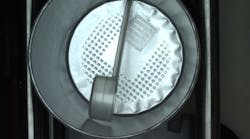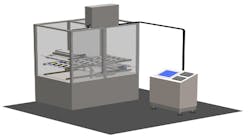Standard images are needed
Andy Wilson Editor at Large
An important marketing challenge facing machine-vision vendors is proving that their products and systems are cost-effective and time-saving as inspection testers. Because potential buyers often demand assembly-line demonstrations, they frequently send their products to machine-vision companies for inspection test runs. These items can span the gamut from hypodermic needles to cigarette packages.
Today, however, the imaging capabilities of the World Wide Web, high-speed modems, and powerful PCs have simplified this task. Rather than sending their products to machine-vision vendors, some companies are sending images of the items they want to be inspected. While this method is faster, the process of digitizing and transmitting images can be misused.
Misuse of images
This practice came to light recently during a visit to the Society of Manufacturing Engineers Applied Machine Vision Conference in Nashville, TN. There, one exhibitor recounted how a competitor had downloaded an image from the exhibitor`s Web site and then used it in a trade-magazine article without attribution or permission. The article detailed how a specific algorithm could analyze parts of the image. The company that authored the article was promoting an image-processing algorithm that competed with the method the exhibitor used to analyze the same features.
The vendor in question called both the magazine and the company that had downloaded his images. After receiving apologies from both vendor and magazine alike, everyone was satisfied.
Although such events are rare in the image-processing community, displaying images on the Internet for all to see--and possibly download--can be both detrimental and beneficial. Indeed, it may be a violation of copyright law if when one company uses another company`s copyrighted image for competitive purposes.
For protection, though, image-processing companies can digitally watermark their images using software packages from such companies as Digimarc (Portland, OR). In this way, any infringement becomes obvious. However, because images used in scientific, industrial, medical, and military applications do not have an inherent value, it is highly unlikely that manufacturers of image-processing hardware and software will bother to copyright images used in their demonstrations.
Rather than regard the issue of downloading other companies` images as detrimental, machine-vision suppliers should look at the positive aspects. Barcodes, for example, are common images that can be read by many machine-vision systems. However, partially torn or defaced images might not be read by every system. In that case, by using the same images, systems integrators could compare how different machine-vision systems perform, essentially benchmarking them with the same images.
Standard Image
Standards bodies and trade organizations could help the situation immensely. By supplying standard images of barcodes, semiconductor wafers, color product labels, and pharmaceutical products, for example, OEMs would have a set of standard images that could be used to demonstrate specific algorithms and their efficiencies.
Until then, it seems, Lena and other well-worn "standard" images are being downloaded (either legally or illegally) in an effort to compare and contrast different image-processing algorithms.




